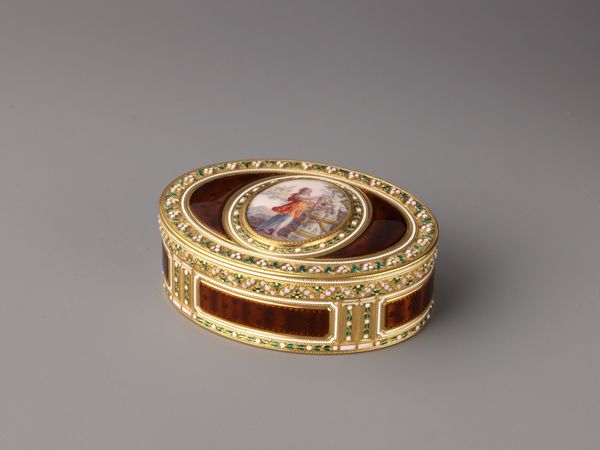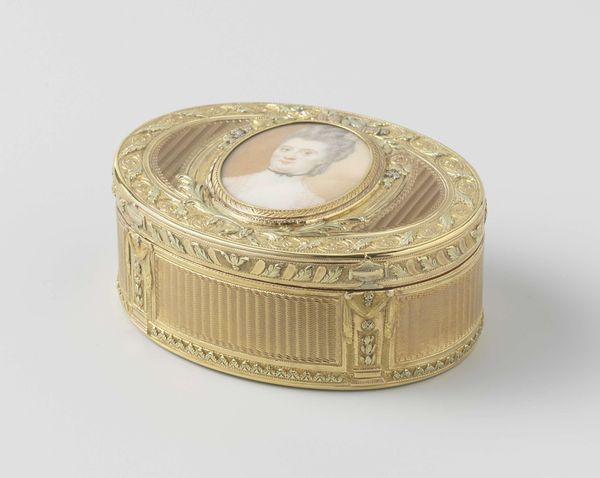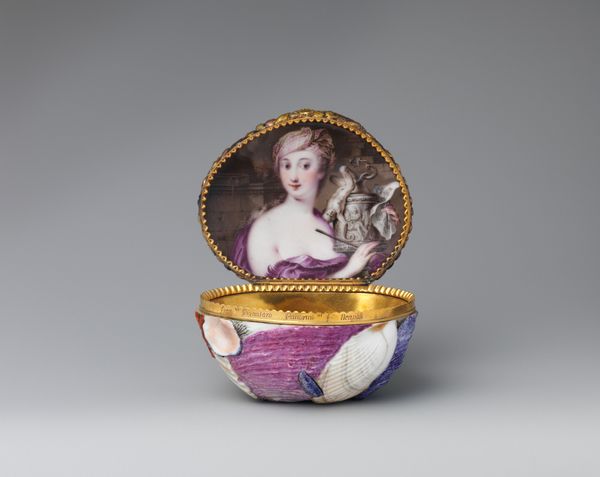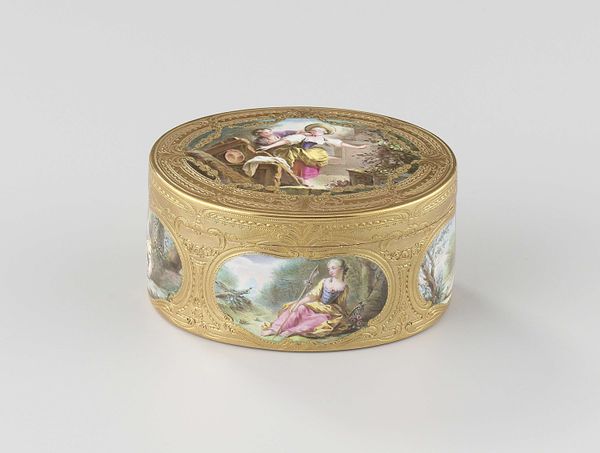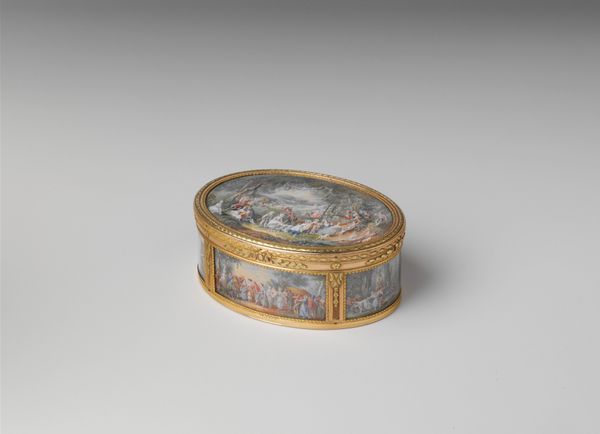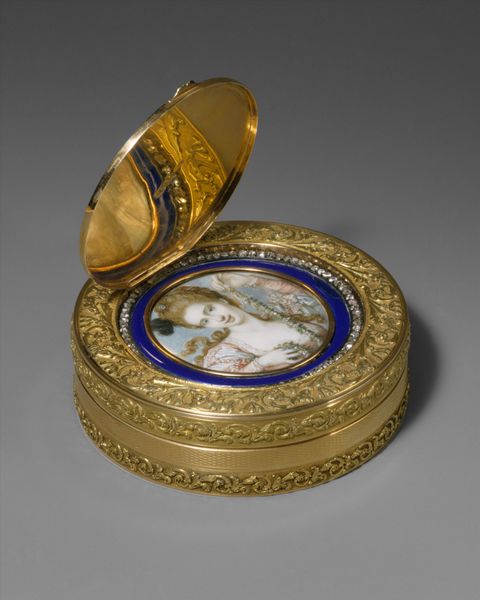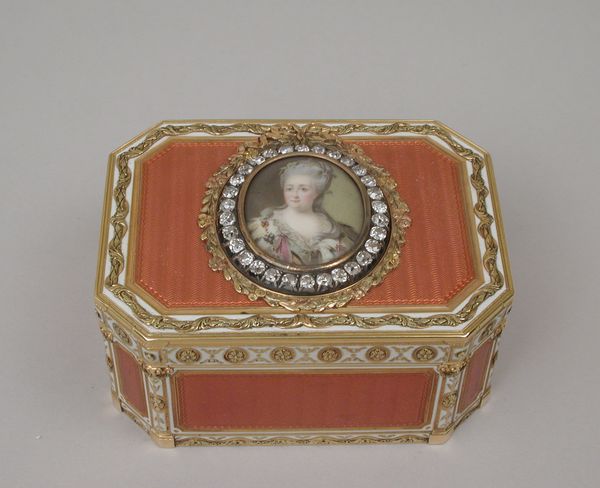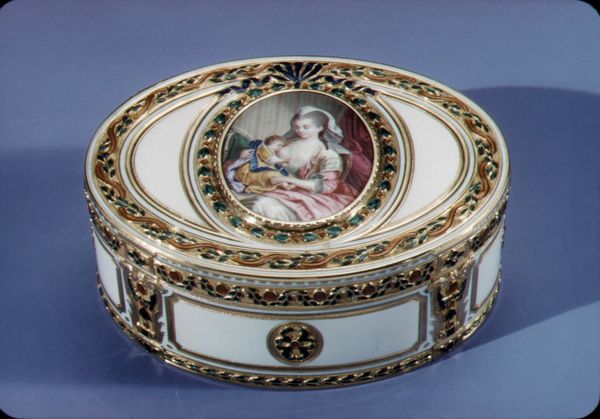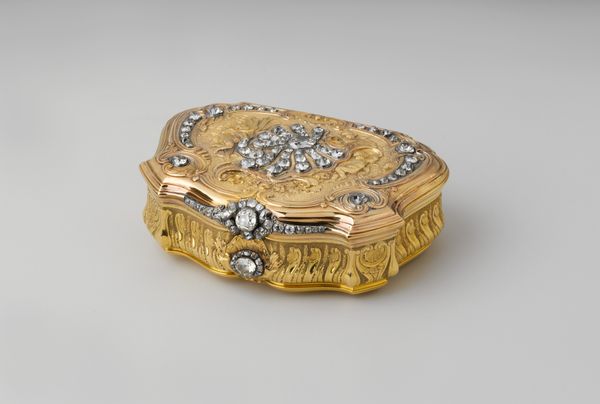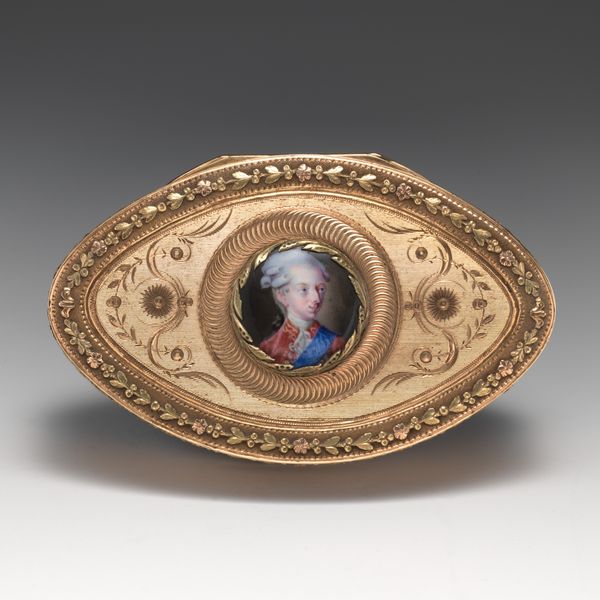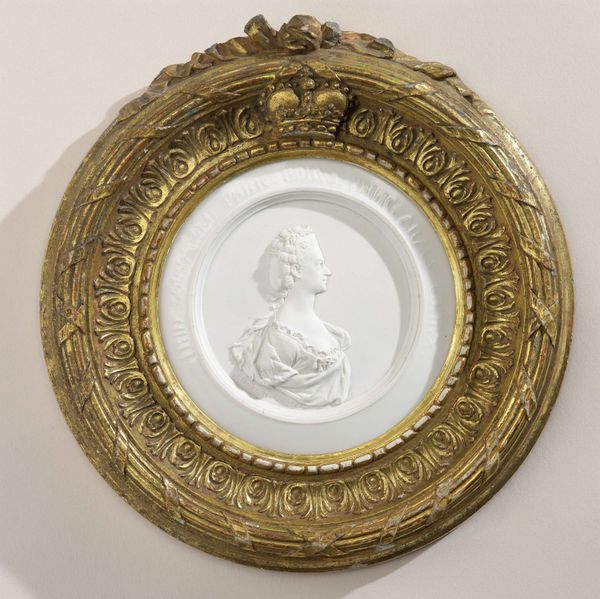
silver, metal, gold, enamel
#
portrait
#
silver
#
baroque
#
metal
#
gold
#
enamel
#
miniature
Dimensions: height 3.2 cm, length 7.0 cm, width 6.2 cm, height 3.2 cm, width 2.5 cm
Copyright: Rijks Museum: Open Domain
Editor: This is an ornate snuffbox with a breast ornament, featuring a portrait of Queen Mary. It's attributed to Henri La Pierre and was likely created sometime between 1680 and 1752. The box itself is crafted from gold and silver, adorned with enamel. It's so incredibly detailed; I am amazed by all these materials. How can we understand the function and relevance of such luxury objects in their own period? Curator: This object speaks volumes about material culture. Notice how the artist utilizes precious materials—gold, silver, enamel. Consider the labor involved in its creation: the mining of the metals, the meticulous crafting of the box, the precise miniature painting. These aren’t just aesthetic choices, they are deliberate markers of status and wealth, tied directly to power structures. What kind of resources, skills, and people were required to create such an intricate object? Editor: So it’s not just about the finished piece, but about tracing the object's origins and purpose through production? It is not just a container but an statement. Curator: Exactly. Think about the raw materials and global trade networks required to get them. Gold might be extracted from a specific colony, silver sourced elsewhere; enamel production a regional craft. Each element has a material history, and by extension a social history linked to exploitation, and wealth concentration. Do you see how this snuffbox becomes a microcosm of 18th-century economics and social relations? Editor: I do. It shifts my perspective from simply admiring the artistry to understanding the complex systems it represents. The question is no longer only whether the final product is beautiful, but whether it hides questionable methods and means. Curator: Precisely. And that's how we, as art historians, challenge traditional boundaries between “high art” and mere "craft" by unveiling the reality behind making it. A simple object becomes a portal into a complex social reality. Editor: That’s fascinating. I'll definitely look at art with new eyes now, beyond the surface. Thank you. Curator: It was my pleasure, I think material analysis helps reveal hidden aspects, urging a critical evaluation of history and artistic merit.
Comments
rijksmuseum about 2 years ago
⋮
Miniature portraits of rulers played an important role in 17th-century diplomacy. An unusual variant arose around 1670 in which the miniatures were set in diamonds. This breast ornament was a gift from Queen Mary, consort of King-Stadtholder William III, to a confidante. It was later mounted on the lid of a gold snuffbox.
Join the conversation
Join millions of artists and users on Artera today and experience the ultimate creative platform.
